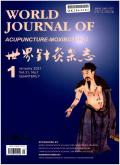Research progress on the mechanism of neural electrical information transmission in acupuncture intervention of depression
IF 1.3
4区 医学
Q4 INTEGRATIVE & COMPLEMENTARY MEDICINE
引用次数: 0
Abstract
Acupuncture has been proven effective in treating depressive disorders, and its neuroelectrophysiological mechanisms have drawn increasing scientific attention. This paper reviews recent neuroelectrophysiological studies on acupuncture in the treatment of depressive disorders. Studies have shown that acupuncture can modulate the Alpha and Theta wave frequencies and amplitudes of electroencephalograms; improve the latency and amplitude of event-related potential such as P300 and mismatch negativity (MMN); enhance the amplitude of motor-evoked potential and short-interval intracortical inhibition as measured by transcranial magnetic stimulation-electromyography (TMS-EMG); regulate both spontaneous and induced rhythmic activities; increase motor cortex excitability; and promote the electrical signal transmission in neuronal clusters. Acupuncture can enhance the long-term potentiation (LTP) detected by PCRT, repair the plasticity of synaptic functions, and promote the transmission of synaptic information; lower the action potential (AP) and population spike (PS) membrane voltage detected by PCRT, inhibit abnormal neuronal excitability, and restore electrical signal transmission across neuronal membranes. These findings, as summarized in this review, may reflect potential neuroelectrical signal transmission mechanisms involved in the acupuncture interventions for depressive disorders.
针刺干预抑郁症的神经电信息传递机制研究进展
针灸治疗抑郁症的有效性已被证实,其神经电生理机制已引起越来越多的科学关注。本文综述了近年来针刺治疗抑郁症的神经电生理研究进展。研究表明,针灸可以调节脑电图的α波和θ波频率和振幅;改善P300和失配负性(MMN)等事件相关电位的潜伏期和振幅;经颅磁刺激-肌电图(TMS-EMG)测量运动诱发电位振幅和短间隔皮质内抑制增强;调节自发的和诱导的节奏活动;增加运动皮质兴奋性;并促进神经元簇内电信号的传递。针刺可增强PCRT检测到的长时程增强(LTP),修复突触功能的可塑性,促进突触信息的传递;降低PCRT检测到的动作电位(AP)和群体峰(PS)膜电压,抑制神经元异常兴奋性,恢复神经元膜电信号传递。本综述总结的这些发现可能反映了针灸干预抑郁症的潜在神经电信号传递机制。
本文章由计算机程序翻译,如有差异,请以英文原文为准。
求助全文
约1分钟内获得全文
求助全文
来源期刊

World Journal of Acupuncture-Moxibustion
INTEGRATIVE & COMPLEMENTARY MEDICINE-
CiteScore
1.30
自引率
28.60%
发文量
1089
审稿时长
50 days
期刊介绍:
The focus of the journal includes, but is not confined to, clinical research, summaries of clinical experiences, experimental research and clinical reports on needling techniques, moxibustion techniques, acupuncture analgesia and acupuncture anesthesia.
 求助内容:
求助内容: 应助结果提醒方式:
应助结果提醒方式:


